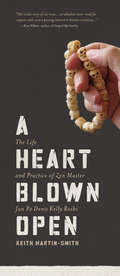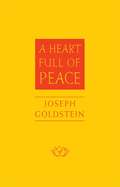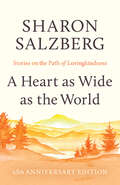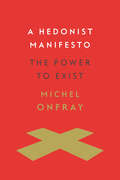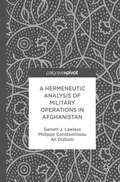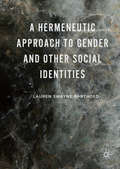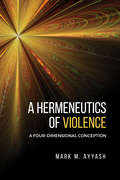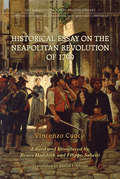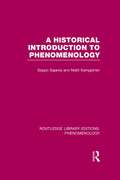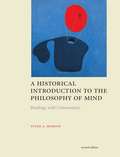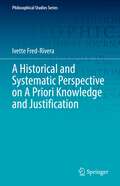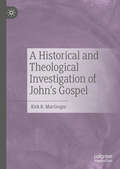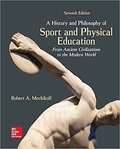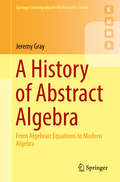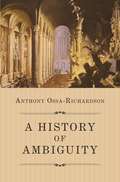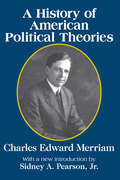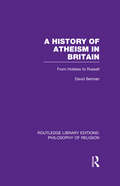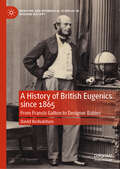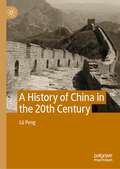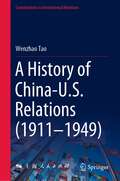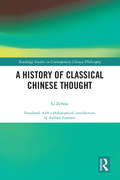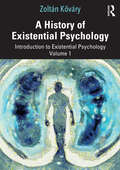- Table View
- List View
A Heart Blown Open
by Keith Martin-SmithA Heart Blown Open chronicles the extraordinary journey of Zen master Jun Po Denis Kelly Roshi, whose life landed him in prison long before he landed in a monastery. Experience the successes and failures that led him to found an entirely new form of Buddhism called Mondo Zen. Starting from an abusive and alcoholic home in Wisconsin, Kelly becomes a major force in the counterculture of the 1960s and one of its biggest manufacturers of LSD. He ends up on the run for five years before serving time in a federal prison, and then goes on to spend six years in a Zen monastery. In his fiftieth year, he becomes a recognized Zen master in his own right, but the real journey is just about to begin. Extraordinary in their playfulness, depravity, and liberating insight, Jun Po's life events swirl together to underscore and illuminate the environment from which one of the most controversial masters of the American Zen scene has emerged. A Heart Blown Open constitutes a powerful synthesis of Eastern contemplative wisdom and Western psychological insight and is as entertaining as it is inspirational.Winner of the 2013 Silver Award for Excellence from Nautilus Book Awards.
A Heart Full of Peace
by His Holiness the Dalai Lama Joseph GoldsteinLove, compassion, and peace - these words are at the heart of all spiritual endeavors. Although we intuitively resonate with their meaning and value, for most of us, the challenge is how to embody what we know: how to transform these words into a vibrant, living practice. In these times of conflict and uncertainty, this transformation is far more than an abstract ideal; it is an urgent necessity. Peace in the world begins with us. This wonderfully appealing offering from one the most trusted elders of Buddhism in the West is a warm and engaging exploration of the ways we can cultivate and manifest peace as wise and skillful action in the world. This charming book is illuminated throughout with lively, joyous, and sometimes even funny citations from a host of contemporary and ancient sources - from the poetry of W.S. Merwin and Galway Kinnell to the haiku of Issa and the great poet-monk Ryokan, from the luminous aspirations of Saint Francis of Assisi to the sage advice of Thich Nhat Hanh and the Dalai Lama.
A Heart as Wide as the World: Stories on the Path of Lovingkindness
by Sharon SalzbergThe beloved Buddhist meditation teacher and New York Times–bestselling author of Real Happiness offers encouragement and inspiration for anyone on the spiritual pathBuddhist teachings have the power to transform our lives for the better, says Sharon Salzberg, and all we need to bring about this transformation can be found in the ordinary events of our everyday experiences. In A Heart as Wide as the World, Salzberg distills more than twenty-five years of teaching and practicing meditation into a series of short essays, rich with anecdotes and personal revelations, that offer genuine aid and comfort for anyone on the spiritual path. Many chance moments, both small and profound, serve as the basis for Salzberg's teachings: hearing a market stall hawker calling, &“I have what you need!&”; noting hotel guests&’ reactions to a midnight fire alarm; watching her teacher, Dipa Ma, bless a belligerent dog; seeing the Dalai Lama laughing uproariously at his own mistake. Each passing moment, Salzberg shows, can help us down the path toward &“a seamlessness of connection and an unbounded heart.&”
A Hedonist Manifesto
by Michel Onfray Joseph McclellanMichael Onfray passionately defends the potential of hedonism to resolve the dislocations and disconnections of our melancholy age. In a sweeping survey of history's engagement with and rejection of the body, he exposes the sterile conventions that prevent us from realizing a more immediate, ethical, and embodied life. He then lays the groundwork for both a radical and constructive politics of the body that adds to debates over morality, equality, sexual relations, and social engagement, demonstrating how philosophy, and not just modern scientism, can contribute to a humanistic ethics. Onfray attacks Platonic idealism and its manifestation in Judaic, Christian, and Islamic belief. He warns of the lure of attachment to the purportedly eternal, immutable truths of idealism, which detracts from the immediacy of the world and our bodily existence. Insisting that philosophy is a practice that operates in the real, material world, Onfray enlists Epicurus and Democritus to undermine idealist and theological metaphysics; Nietzsche, Bentham, and Mill to dismantle idealist ethics; and Palante and Bourdieu to collapse crypto-fascist neoliberalism. In their place, he constructs a positive, hedonistic ethics that enlarges on the work of the New Atheists to promote a joyful approach to our lives in this, our only, world.
A Hedonist Manifesto: The Power to Exist (Insurrections: Critical Studies in Religion, Politics, and Culture)
by Michel OnfrayMichael Onfray passionately defends the potential of hedonism to resolve the dislocations and disconnections of our melancholy age. In a sweeping survey of history's engagement with and rejection of the body, he exposes the sterile conventions that prevent us from realizing a more immediate, ethical, and embodied life. He then lays the groundwork for both a radical and constructive politics of the body that adds to debates over morality, equality, sexual relations, and social engagement, demonstrating how philosophy, and not just modern scientism, can contribute to a humanistic ethics.Onfray attacks Platonic idealism and its manifestation in Judaic, Christian, and Islamic belief. He warns of the lure of attachment to the purportedly eternal, immutable truths of idealism, which detracts from the immediacy of the world and our bodily existence. Insisting that philosophy is a practice that operates in a real, material space, Onfray enlists Epicurus and Democritus to undermine idealist and theological metaphysics; Nietzsche, Bentham, and Mill to dismantle idealist ethics; and Palante and Bourdieu to collapse crypto-fascist neoliberalism. In their place, he constructs a positive, hedonistic ethics that enlarges on the work of the New Atheists to promote a joyful approach to our lives in this, our only, world.
A Hermeneutic Analysis of Military Operations in Afghanistan
by Garrett J. Lawless Philippe Constantineau Ali DizboniThis book introduces the field of hermeneutics through a critique of military operations in Afghanistan. Following a brief survey of modern political history of the country, the authors examine the link between cultural factors and the inefficiency of nation-building operations. Additionally, the project discusses contending academic approaches to culture, and identifies shortcomings in their theoretical propositions for military operations in failed states. Ultimately, this volume contextualizes the evolution of hermeneutical thinking and the benefits it provides in assessing the transformation of culture through military intervention.
A Hermeneutic Approach to Gender and Other Social Identities
by Lauren Swayne BartholdThis book draws on the hermeneutics of Hans-Georg Gadamer to inform a feminist perspective of social identities. Lauren Swayne Barthold moves beyond answers that either defend the objective nature of identities or dismiss their significance altogether. Building on the work of both hermeneutic and non-hermeneutic feminist theorists of identity, she asserts the relevance of concepts like horizon, coherence, dialogue, play, application, and festival for developing a theory of identity. This volume argues that as intersubjective interpretations, social identities are vital ways of fostering meaning and connection with others. Barthold also demonstrates how a hermeneutic approach to social identities can provide critiques of and resistance to identity-based oppression.
A Hermeneutics of Violence: A Four-Dimensional Conception
by Mark M. AyyashAttention to the elusiveness of violence opens up a rich landscape of analysis, whereby social scientists can examine the often-overlooked transformative dimensions of violent acts. Theories of violence are numerous today, but because of the mysterious nature of violence, and how each individual or group may endure it uniquely, its study cannot be limited to one specialized and highly restricted field. A Hermeneutics of Violence seeks to remedy this problem by placing in dialogue various theories of violence from the disciplines of anthropology, sociology, international relations, and philosophy. This study uses a four-dimensional lens to examine the many facets of violence, including its instrumental, linguistic, mimetic, and transcendental dimensions. Far from irreconcilable, these positions, when placed within a four-dimensional outlook, open up new avenues for the study of particular cases of violence. Exploring the complex interactions, for instance, of "enemy-siblings," Mark M. Ayyash reveals "postures of incommensurability" that continuously produce conflictual positions across a spectrum of time and space and demand the release of violence. The book concludes that these postures must be understood and deconstructed before we can have a legitimate chance to achieve peace and justice, the conceptions of which must come with the intent of not necessarily opposing violence but rather replacing our conceptions of what the violences have come to constitute as "real."
A Historical Essay on the Neapolitan Revolution of 1799
by Bruce Haddock David Gibbons Vincenzo Cuoco Filippo SabettiDeeply influenced by Enlightenment writers from Naples and France, Vincenzo Cuoco (1770-1823) was forced into exile for his involvement in the failed Neapolitan revolution of 1799. Living in Milan, he wrote what became one of the nineteenth century's most important treatises on political revolution.In his Historical Essay on the Neapolitan Revolution of 1799, Cuoco synthesized the work of Machiavelli, Vico, and Enlightenment philosophers to offer an explanation for why and how revolutions succeed or fail. A major influence on political thought during the unification of Italy, the Historical Essay was also an inspiration to twentieth-century thinkers such as Benedetto Croce and Antonio Gramsci.This critical edition, featuring an authoritative translation, introduction, and annotations, finally makes Cuoco's work fully accessible to an English-speaking audience.
A Historical Introduction to Phenomenology (Routledge Library Editions: Phenomenology)
by Matti Kamppinen Seppo SajamaThis book offers a concise exposition of the content theory of intentionality, which lies at the root of Husserl’s phenomenology, for student and scholar. Originally published in 1982. The first part traces the history of phenomenology from its beginnings in Aristotle and Aquinas through Hume, Reid and the Brentano school to its first clear formulation in Frege and Husserl. Part two analyses some special problems involved in two important types of mental phenomena – perception and emotion – without abandoning the historical approach. Husserl’s theory of perception is extensively discussed and a Husserlian analysis of so-called de re acts is attempted.
A Historical Introduction to the Philosophy of Mind: Readings with Commentary (2nd edition)
by Peter Alan MortonThe issues introduced in this book are today referred to collectively as "the mind-body problem." The simplest way to describe this problem is to say that it is a search for an answer to the question, 'What is the relationship between the mind and the physical body?' This search raises such issues as whether the mind and body are one thing or two, and whether artificial machines could have minds.
A Historical and Legal Comparison between Tianxia Wei Gong and Quod Omnes Tangit (Ius Gentium: Comparative Perspectives on Law and Justice #110)
by Yifan ShangThis book explores the historical and legal importance of two principles, Quod Omnes Tangit, and Tianxia Wei Gong, which have played significant roles in European and Chinese political and legal history. While Quod Omnes Tangit has been thoroughly researched, Tianxia Wei Gong has not been systematically examined. This thesis fills this void and connects these two principles for the first time. Quod Omnes Tangit was initially introduced in Justinian's Codex Civil, while Tianxia Wei Gong originated from Liji, one of the books in a key series of works by Confucius. Liji is comparable to the Thora in the Old Testament and is considered as important as law in Chinese legal history. Both principles have undergone comparable developmental processes, with scholars contributing to their reinterpretation. This book thoroughly examines the interpretations of individual scholars, with particular attention given to Liang Qichao, who is the only one to have mentioned both Tianxia Wei Gong and Quod Omnes Tangit. The book also provides an explanation for the original discrepancies in their concepts, particularly their methodologies in distributing and legitimizing rights. This research will be of interest to legal philosophers and historians in both the Western and Eastern worlds, legal practitioners and policymakers, and researchers seeking to explain current events and explore fundamental differences between the East and West.
A Historical and Systematic Perspective on A Priori Knowledge and Justification (Philosophical Studies Series #151)
by Ivette Fred-RiveraThis book provides a detailed and comprehensive account of the problem of a priori knowledge from a historical as well as a systematic perspective. The author explores Kant’s views in connection with the possibility of revision, something hardly, if at all, done in philosophical literature. Furthermore, the views of well-renowned philosophers such as Quine, Putnam, Kitcher, and Hale are discussed in detail and are put into a historical and systematic perspective. Finally, this book contains a glossary of important notions offering illuminating accounts of a priori knowledge and related notions and explains the relationship between a priori knowledge, fallibility and revision. The detailing of concepts such as ‘defeasibility’, ‘infallibility’, ‘falsifiability’ helps anyone reading philosophical literature to pin down the meaning of the terms and its implications in this context. The enriched and dual approach the author takes makes the book a very useful and lucid guide to the problem of a priori knowledge.
A Historical and Theological Investigation of John's Gospel
by Kirk R. MacGregorThis book provides original and controversial contributions into specific areas of Johannine studies, along with defenses of various traditional theological interpretations of John that are commonly overlooked in New Testament scholarship. Kirk R. MacGregor offers new insights into the authorship of the Fourth Gospel, the content of the underlying Signs Source, the meaning of the phrases “believe in him” and “believe in his name,” Jesus’ claim that Abraham saw his day, the significance of John 14.6, and why the resurrected Jesus upbraided Thomas. MacGregor employs the doctrine of middle knowledge to reconcile the seemingly paradoxical Johannine claims of divine predestination, genuine human freedom, and the universal divine salvific will. He defends the ontological equality but functional subordination of the Johannine Jesus to God the Father as well as the deity and personality of the Holy Spirit as presented by the Gospel of John.
A History and Philosophy of Sport and Physical Education: From Ancient Civilizations to the Modern World
by Robert MechikoffA History and Philosophy of Sport and Physical Education - From Ancient Civilizations to the Modern World, has been meaningfully written to engage readers with essential information and critical introspection that is meant to inspire and educate. This edition highlights salient individuals, movements, beliefs, and events that have impacted the long and storied historical and philosophical development of sport, physical education, and kinesiology. Robert Mechikoff offers students a layered and scholarly look into the sports and physical activities of the world - ranging from Ancient Egypt, Greece, and Rome to the emergence of the professional and academic disciplines of physical education and kinesiology in the modern world, as well as the political and social modern realities of the Olympic Games.
A History of Abstract Algebra: From Algebraic Equations to Modern Algebra (Springer Undergraduate Mathematics Series)
by Jeremy GrayThis textbook provides an accessible account of the history of abstract algebra, tracing a range of topics in modern algebra and number theory back to their modest presence in the seventeenth and eighteenth centuries, and exploring the impact of ideas on the development of the subject. Beginning with Gauss’s theory of numbers and Galois’s ideas, the book progresses to Dedekind and Kronecker, Jordan and Klein, Steinitz, Hilbert, and Emmy Noether. Approaching mathematical topics from a historical perspective, the author explores quadratic forms, quadratic reciprocity, Fermat’s Last Theorem, cyclotomy, quintic equations, Galois theory, commutative rings, abstract fields, ideal theory, invariant theory, and group theory. Readers will learn what Galois accomplished, how difficult the proofs of his theorems were, and how important Camille Jordan and Felix Klein were in the eventual acceptance of Galois’s approach to the solution of equations. The book also describes the relationship between Kummer’s ideal numbers and Dedekind’s ideals, and discusses why Dedekind felt his solution to the divisor problem was better than Kummer’s. Designed for a course in the history of modern algebra, this book is aimed at undergraduate students with an introductory background in algebra but will also appeal to researchers with a general interest in the topic. With exercises at the end of each chapter and appendices providing material difficult to find elsewhere, this book is self-contained and therefore suitable for self-study.
A History of Ambiguity
by Anthony Ossa-RichardsonEver since it was first published in 1930, William Empson’s Seven Types of Ambiguity has been perceived as a milestone in literary criticism—far from being an impediment to communication, ambiguity now seemed an index of poetic richness and expressive power. Little, however, has been written on the broader trajectory of Western thought about ambiguity before Empson; as a result, the nature of his innovation has been poorly understood.A History of Ambiguity remedies this omission. Starting with classical grammar and rhetoric, and moving on to moral theology, law, biblical exegesis, German philosophy, and literary criticism, Anthony Ossa-Richardson explores the many ways in which readers and theorists posited, denied, conceptualised, and argued over the existence of multiple meanings in texts between antiquity and the twentieth century. This process took on a variety of interconnected forms, from the Renaissance delight in the ‘elegance’ of ambiguities in Horace, through the extraordinary Catholic claim that Scripture could contain multiple literal—and not just allegorical—senses, to the theory of dramatic irony developed in the nineteenth century, a theory intertwined with discoveries of the double meanings in Greek tragedy. Such narratives are not merely of antiquarian interest: rather, they provide an insight into the foundations of modern criticism, revealing deep resonances between acts of interpretation in disparate eras and contexts. A History of Ambiguity lays bare the long tradition of efforts to liberate language, and even a poet’s intention, from the strictures of a single meaning.
A History of American Political Theories
by Charles MerriamA History of American Political Theories is a comprehensive attempt to understand the full sweep of American political thought since the founding. Working within the liberal-progressive tradition, Merriam reviewed American political history in its entirety, from the founding down to his own day. He was not out to reduce political thought to a single element such as economics alone; his aim was to encompass the whole of modern social science.The political science of the liberal-progressive tradition has roots and assumptions that were born in this period and nurtured by scholars such as Merriam. The progressive tradition in general and Merriam in particular interpreted the rise of a new science of politics that would be required for the liberal-progressive world view he represented. His work stands at a momentous fork in the road; two great traditions of how American democracy should be understood, interpreted, and analyzed parted company and afterward each went their separate ways. These traditions are represented, respectively, by the founders and the liberal-progressives. There was much at stake in these academic debates, though the consequences were not entirely foreseen at the time.An overview of the authors, works, and general source material covered in History of American Political Theories is impressive. Merriam viewed the study of American democracy as an eclectic activity embracing the broadest definition of the social sciences, with particular emphasis on psychology. Such a transformation required that the social sciences be grouped as a whole rather than fragmented into separate and distinct academic departments.
A History of Atheism in Britain: From Hobbes to Russell (Routledge Library Editions: Philosophy of Religion)
by David BermanProbably no doctrine has excited as much horror and abuse as atheism. This first history of British atheism, first published in 1987, tries to explain this reaction while exhibiting the development of atheism from Hobbes to Russell. Although avowed atheism appeared surprisingly late – 1782 in Britain – there were covert atheists in the middle seventeenth century. By tracing its development from so early a date, Dr Berman gives an account of an important and fascinating strand of intellectual history.
A History of Balance, 1250-1375
by Joel KayeThe ideal of balance and its association with what is ordered, just, and healthful remained unchanged throughout the medieval period. The central place allotted to balance in the workings of nature and society also remained unchanged. What changed within the culture of scholasticism, between approximately 1280 and 1360, was the emergence of a greatly expanded sense of what balance is and can be. In this groundbreaking history of balance, Joel Kaye reveals that this new sense of balance and its potentialities became the basis of a new model of equilibrium, shaped and shared by the most acute and innovative thinkers of the period. Through a focus on four disciplines - scholastic economic thought, political thought, medical thought, and natural philosophy - Kaye's book reveals that this new model of equilibrium opened up striking new vistas of imaginative and speculative possibility, making possible a profound re-thinking of the world and its workings.
A History of British Eugenics since 1865: From Francis Galton to Designer Babies (Medicine and Biomedical Sciences in Modern History)
by David RedvaldsenThis book examines British eugenics from its origins in 1865 to the early 1990s. It considers the two institutions promoting the doctrine: the Galton Laboratory attached to the University of London; and the Eugenics Society. It charts internal and ideological changes across more than a century, seeing eugenics as primarily a political movement. The doctrine had influence on British society and guided adherents ranging from scientists to charitable ladies. The Galton Laboratory published detailed studies of heredity. It transformed itself into a centre for medical genetics after the Second World War. As early as the 1920s, the Eugenics Society was the mainspring of the doctrine, formulating what became the British version of an international ideology. It began as applied social Darwinism, later incorporating a greater degree of meritocracy and amelioration. Its support for sterilization in the 1930s eroded the kudos it had gained in policy-making circles. From the 1960s, organized eugenics was especially a forum for learned and popular discussion of biology and sociology. Medical advances after 1970 aided its continuation, notably the growth of assisted reproductive technologies. The book presents British eugenics as mostly shaped by domestic concerns, offering new revelations and interpretations with the capacity to readjust historical thinking. It also covers contemporary bioethical and political issues aligned to eugenics.
A History of China in the 20th Century
by Lü PengThis book provides readers with rich context and detailed description leading to new perspectives on major historical events in China. Positioned as a thought leader and highly acclaimed arts professional in China, the author is able to give a historical account of China’s twentieth century that is richly informed by its valent fields of political economy and cultural studies. Western readers' knowledge of China’s twentieth century remains based on pioneering research of modern scholars such as Fairbank and Jonathan Spence. In recent years, however, it is rare to see a complete history of China spanning the nineteenth and twentieth centuries which also includes the first two decades of the twenty-first century. This book contributes new narrative and perspective to this span of history. Now, as the Sino-US trade conflict makes dramatic impact on a post-COVID global economy, readers have the need for a fresh understanding of how China came to be what it is today. The author’s groundbreaking work provides new insight provided by newly uncovered sources explaining how China came to be what it is today from a cultural and sociological perspective, in a historical mode.
A History of China-U.S. Relations (Contributions to International Relations)
by Wenzhao TaoThis book contains the history of China-U.S. Relations (1911–1949), including China-US relations in Early Republican Period, the impact of Versailles Peace Conference and Washington Conference on China-US relations, US support for Northern Warlord Government, the Guangzhou Revolutionary Government, and the Nanjing National Government. During the War of Resistance Against Japanese Aggression, the United States went from neutral to form an alliance with China against Japan. After the end of the War, China and the United States gradually moved toward confrontation. This book also has a brief description of China-US relations from 1784 to 1911.
A History of Classical Chinese Thought (Routledge Studies in Contemporary Chinese Philosophy)
by Zehou LiLi Zehou is widely regarded as one of China’s most influential contemporary thinkers. He has produced influential theories of the development of Chinese thought and the place of aesthetics in Chinese ethics and value theory. This book is the first English-language translation of Li Zehou’s work on classical Chinese thought. It includes chapters on the classical Chinese thinkers, including Confucius, Mozi, Laozi, Sunzi, Xunzi and Zhuangzi, and also on later eras and thinkers such as Dong Zhongshu in the Han Dynasty and the Song-Ming Neo-Confucians. The essays in this book not only discuss these historical figures and their ideas, but also consider their historical significance, and how key themes from these early schools reappeared in and shaped later periods and thinkers. Taken together, they highlight the breadth of Li Zehou’s scholarship and his syncretic approach—his explanations of prominent thinkers and key periods in Chinese intellectual history blend ideas from both the Chinese and Western canons, while also drawing on contemporary thinkers in both traditions. The book also includes an introduction written by the translator that helpfully explains the significance of Li Zehou’s work and its prospects for fostering cross-cultural dialogue with Western philosophy. A History of Chinese Classical Thought will be of interest to advanced students and scholars interested in Chinese philosophy, comparative philosophy, and Chinese intellectual and social history.
A History of Existential Psychology: Introduction to Existential Psychology Volume 1
by Zoltán KőváryThe first in a two-part set, this book takes a deep dive into the history and theory of existential psychology.Beginning with a discussion of the “existentialism and psychology problem,” the book presents the philosophical and historical roots of existential psychology. It introduces the most important philosophical schools in the development of existentialism and their creators, such as Kierkegaard, Nietzsche, Heidegger and Sartre, as well as the literary roots of existentialism in the writings of Dostoevsky and Kafka and the important contribution of psychoanalysis and phenomenological psychiatry. The book then goes on to look at the existential psychology schools, including daseinsanalysis, logotherapy and existential analysis, the existential-humanistic school and the existential-phenomenological school.Going beyond the questions of therapy and counseling that typically make up the study of existential psychology, the book offers the ultimate introduction for students and scholars of this fascinating and deeply rooted discipline. It may also interest professionals working in related fields.
